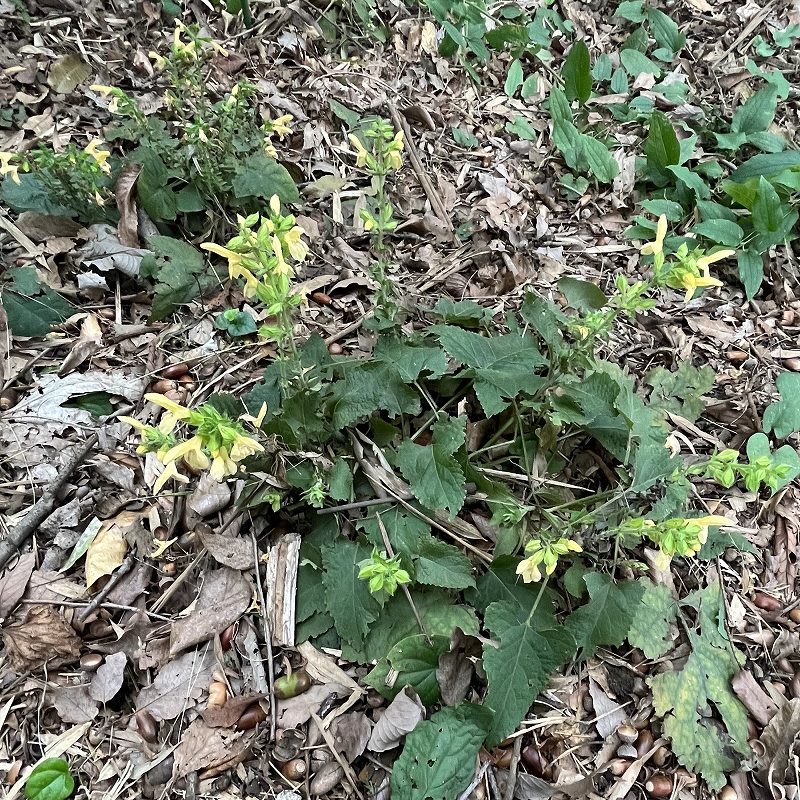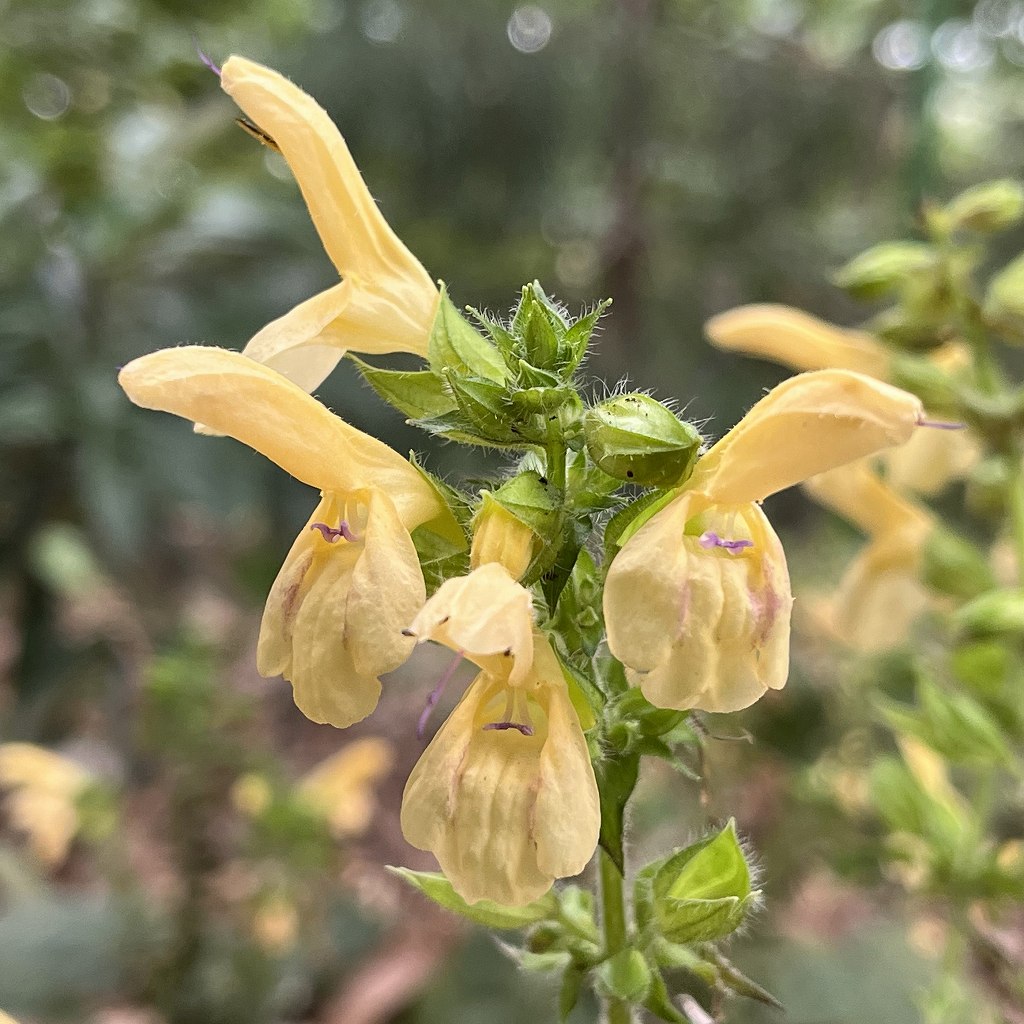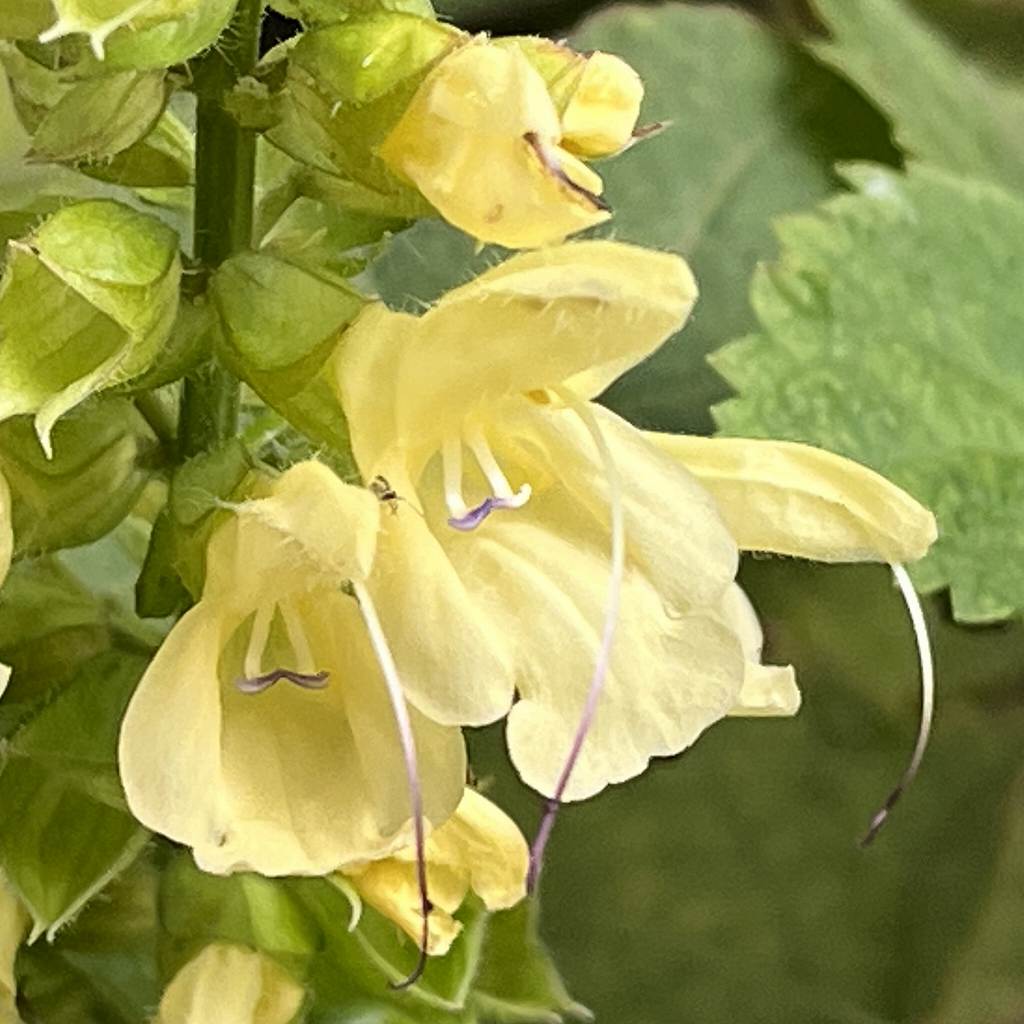キバナアキギリは山地の木陰など少し湿ったところで自生。林床に灯るように黄色の花が咲きます。花は唇形で雌しべが突出、雄しべが2本。
Salvia nipponica grows wild in slightly damp places such as in the shade of trees in mountains. It has yellow flowers that light up the forest floor. Its flowers are lip-shaped, with a protruding pistil and two stamens.
【仮名】キバナアキギリ, コトジソウ
【和名】黄花秋桐, 琴柱草
【英名】Salvia nipponica, Japanese Woodland Sage
【学名】Salvia nipponica
【誕生】10/10
【開花】08, 09, 10月
【花色】Yellow



キバナアキギリ
キバナアキギリの概要
キバナアキギリはシソ科アキギリ属の多年草です。本州、四国、九州に分布し、山地の木陰など少し湿ったところで自生。林床に灯るように花が咲く一方、若芽は天ぷらや和え物などで食べられます。花言葉は「華やかな青春」。変種の「木曽黄花秋桐」は花が淡黄色で夏に咲きます。
キバナアキギリの名前
キバナアキギリの名前の由来は「桐」に似た葉を広げ、「秋」に「花」を咲かせ、その色が「黄」だから。別名「琴柱草」の由来は琴の胴に立てて絃を支える柱に葉の形が似ているからです。ラテン語の属名サルビアは「治療」や「健康」、種小名ニッポニカは「日本の」という意味。
キバナアキギリの姿形
キバナアキギリの茎は4稜で軟毛が生え、地際で少し傾きながら立ち上がります。葉は三角形の鉾形で対生。基部が耳のように張り出し、縁に鋸歯が入ります。花は唇形で雌しべが突出、雄しべが2本。上唇と下唇の間に虫が潜り込むと背中で花粉が送受されます。花後は分果を形成。
キバナアキギリの近縁
キバナアキギリの近縁「秋桐」は本州の中部地方から近畿地方にかけて分布。ラテン語の種小名グラブレセンスは「やや無毛の」という意味です。茎が4稜で傾きながら立ち上がり、葉が三角形の鉾形で対生し、花が2唇形で雌しべが突出。姿形がよく似ていますが、花は赤紫色です。
Salvia nipponica
Salvia nipponica is a perennial plant of the Lamiaceae family. It is distributed in Honshu, Shikoku, and Kyushu, and grows naturally in slightly damp places such as in the shade of trees in mountains. While the flowers bloom like lights on the forest floor, the young shoots can be eaten in tempura and seasoned dishes. The language of flowers is “gorgeous youth”. Its variant, “kisoensis”, has pale yellow flowers and blooms in summer.
The Japanese name of Salvia nipponica means “the leaves are similar to Paulownia and the yellow flowers bloom in autumn”. There is also another name that means “the shape of the leaves resembles the pillars that stand on the body of the koto and support the strings”. The Latin genus name Salvia means “healing” or “health”. The species name nipponica means “Japanese”.
The stems of Salvia nipponica have four ridges with soft hairs and stand up at a slight angle from the ground. The leaves are triangular and halberd-shaped and grow opposite each other. It has an ear-like protrusion at the base and serrated edges. The flowers are lip-shaped, with a protruding pistil and two stamens. When an insect burrows between the upper and lower lips, the insect’s back sends and receives pollen. After flowering, it forms fruit.
Salvia glabrescens, a close relative of Salvia nipponica, is distributed from the Chubu region of Honshu to the Kinki region. The Latin species name glabrescens means “slightly hairless”. The stems stand up at an angle with four edges, the leaves are triangular and halberd-shaped and grow opposite each other, and the flowers are two-lipped with protruding pistils. They look very similar, but the flowers are reddish-purple.


